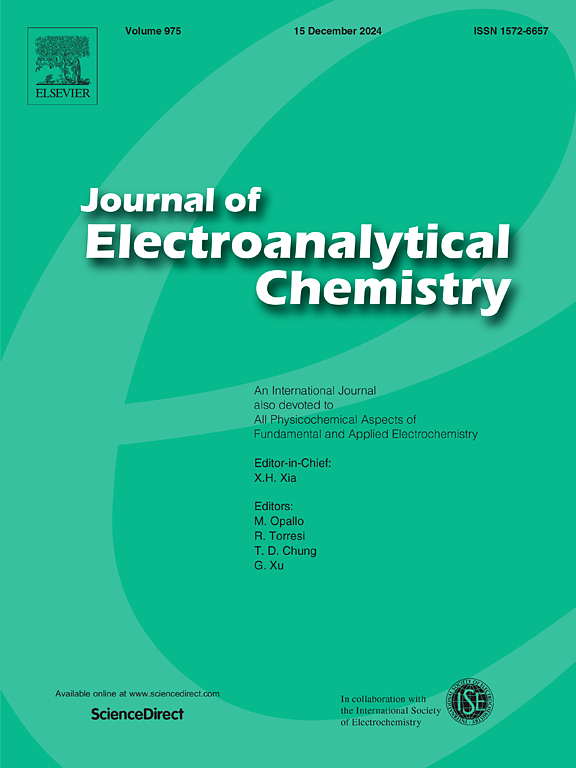Application of nitrogen-doped graphene-like cobalt nanoparticle composite catalysts in zinc-air batteries
IF 4.1
3区 化学
Q1 CHEMISTRY, ANALYTICAL
引用次数: 0
Abstract
Development of stable, active and noble-metal-free catalysts is substantial for leading-edge technology of high-efficiency zinc-air batteries. In this study, β-cyclodextrin is employed as the coating material as well as reducing agent to develop a nitrogen-doped carbon layer-encapsulated Co nanoparticle catalyst. The catalyst demonstrated a significant synergistic effect between Co nanoparticles and N-β-CD, exhibiting exceptional performance, durability, and methanol tolerance in both the oxygen reduction reaction and oxygen evolution reaction. Aqueous electrolyte ZAB demonstrated a high peak power density of 146.2 mW cm−2, a specific capacity of up to 783.3 mAh g−1, and long-term stability for over 500 h, thereby proposing a novel synthetic strategy for economical non-precious metal catalysts. Enormous potential of integrating the N-β-CD@CoNPs catalyst architecture is validated for advanced energy storage and conversion devices.

氮掺杂类石墨烯钴纳米颗粒复合催化剂在锌空气电池中的应用
开发稳定的、活性的、无贵金属的催化剂对于高效锌空气电池的前沿技术具有重要意义。本研究以β-环糊精作为涂层材料和还原剂,制备了一种氮掺杂碳层包封的Co纳米颗粒催化剂。该催化剂在Co纳米粒子与N-β-CD之间表现出显著的协同效应,在氧还原反应和氧析反应中均表现出优异的性能、耐久性和甲醇耐受性。水溶液电解质ZAB的峰值功率密度高达146.2 mW cm−2,比容量高达783.3 mAh g−1,长期稳定性超过500 h,从而为经济型非贵金属催化剂的合成提供了一种新的策略。整合N-β-CD@CoNPs催化剂结构的巨大潜力被验证用于先进的能量存储和转换设备。
本文章由计算机程序翻译,如有差异,请以英文原文为准。
求助全文
约1分钟内获得全文
求助全文
来源期刊
CiteScore
7.80
自引率
6.70%
发文量
912
审稿时长
2.4 months
期刊介绍:
The Journal of Electroanalytical Chemistry is the foremost international journal devoted to the interdisciplinary subject of electrochemistry in all its aspects, theoretical as well as applied.
Electrochemistry is a wide ranging area that is in a state of continuous evolution. Rather than compiling a long list of topics covered by the Journal, the editors would like to draw particular attention to the key issues of novelty, topicality and quality. Papers should present new and interesting electrochemical science in a way that is accessible to the reader. The presentation and discussion should be at a level that is consistent with the international status of the Journal. Reports describing the application of well-established techniques to problems that are essentially technical will not be accepted. Similarly, papers that report observations but fail to provide adequate interpretation will be rejected by the Editors. Papers dealing with technical electrochemistry should be submitted to other specialist journals unless the authors can show that their work provides substantially new insights into electrochemical processes.

 求助内容:
求助内容: 应助结果提醒方式:
应助结果提醒方式:


